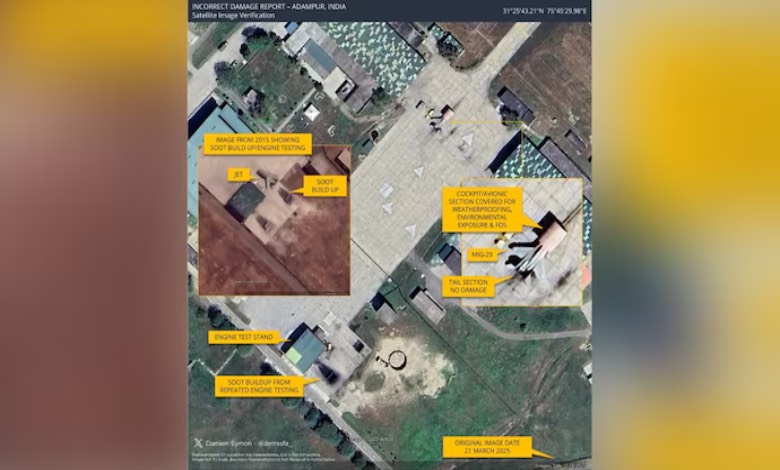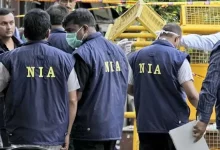Pakistan’s False Claims About Destroying Indian Fighter Jet at Adampur Airbase Exposed by Satellite Evidence

Pakistan was once again left red-faced as geo-spatial intelligence experts shattered the nation’s recent propaganda reports of strikes on India’s strategic Adampur airbase during last month’s four-day military standoff.
Geo-intelligence expert Damien Symon completely debunked Pakistani media claims that indicated their military had hit the Adampur airbase in Punjab with impunity, destroying a Sukhoi Su-30 MKI fighter jet. Symon showed convincing satellite images taken in March 2025, two months before the fighting began, clearly indicating a MiG-29 plane being subjected to regular maintenance processes. The black residue seen close to the engine testing facility, he said, was merely routine operational byproduct.
This recent attempt at spreading misinformation is part of Pakistan’s continuing propaganda campaign after their heavy military losses in Operation Sindoor, India’s counterattack mission launched as a reaction to the deadly Pahalgam terror attack where 26 people lost their lives. Islamabad has always used disinformation strategy to discredit India’s successful counterattacks, although these attempts have consistently failed.
Pakistani media had earlier made false reports of their China-made JF-17 fighter jets downing India’s high-tech Russian-built S-400 air defense system, better known as the Sudarshan Chakra, deployed at Adampur. This highly advanced defense system was pivotal in detecting and neutralizing Pakistani drone assaults and missile attack threats on Indian military bases.

Prime Minister Modi’s Strategic Visit Dispels Pakistani Reports
The falseness in the destruction claims of Pakistan’s S-400 became evidently clear when Prime Minister Narendra Modi made an official tour of the Adampur airbase on May 13, only three days after the end of the conflict. While making his appearance, Modi was clicked hugging military personnel with a perfectly functioning MiG-29 aircraft and an untouched S-400 system visibly present in the background behind him.
Modi’s visit to Adampur, India’s second-largest military airbase, came after he made a strong warning to Pakistan that India had only suspended, and not ended, its offensive actions against terrorist camps and military targets on the other side of the border.
The Pakistani army had previously disseminated so-called satellite photos indicating a battered S-400 system at Adampur, along with celebratory claims of “S-400 damaged!!!” Yet the photo they used contained only an unmarked spot on the ground, entirely lacking any signs of destruction like blast craters, debris strewn about, or destroyed military hardware. Social media figures quickly pointed out the blatant deceit, while Indian authorities methodically debunked every single false rumor.
Adampur Airbase: A Strategic Military Asset
The Adampur airbase holds significant historical and strategic importance in India’s defense architecture, particularly regarding previous military engagements with Pakistan. Its location, positioned merely 100 kilometers from the international border, makes it an essential component of India’s northern aerial defense network.
During the 1965 India-Pak war, Adampur turned out to be the main target of the Pak forces, but it became the only Indian airbase that enemy forces could not penetrate or compromise. The complex housed the critical aircraft, including Su-7 and MiG-21 fighters, and vital missile systems and radar installations.
The airbase had another feather added to its cap in 2022 when it became the first place where India’s sophisticated S-400 air defense system deployment was given. Adampur is currently the home base of a number of Indian Air Force’s top-level fighter squadrons, including cutting-edge MiG-29 and Su-30 MKI fighters.
Armed with state-of-the-art surveillance technology and advanced radar networks, the Adampur airbase is of crucial importance for ensuring and surveilling the security of northern Indian states such as Punjab, Jammu and Kashmir, and Rajasthan. Its strategic location and advanced capabilities continue to make it a pillar of India’s regional defense strategy.




